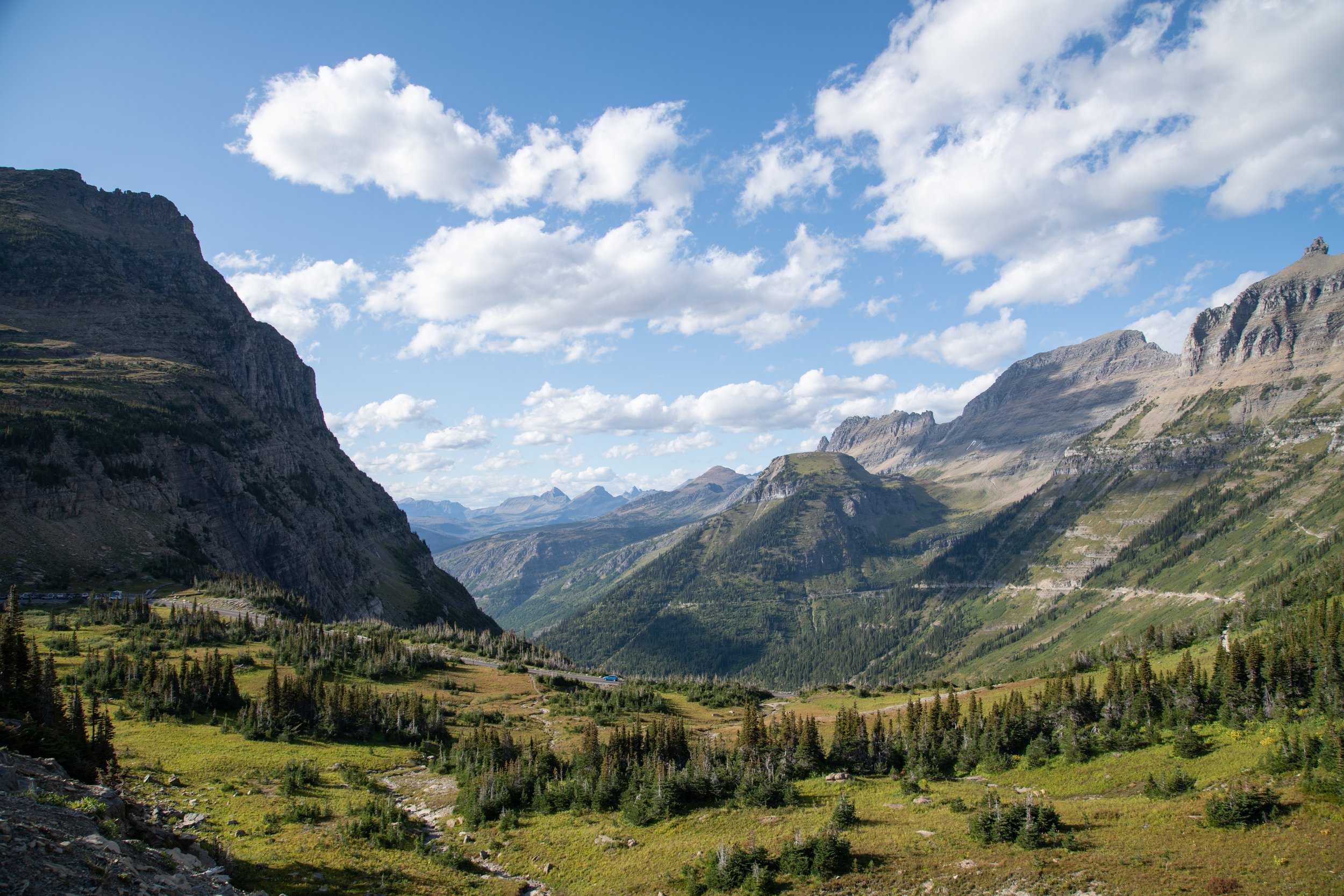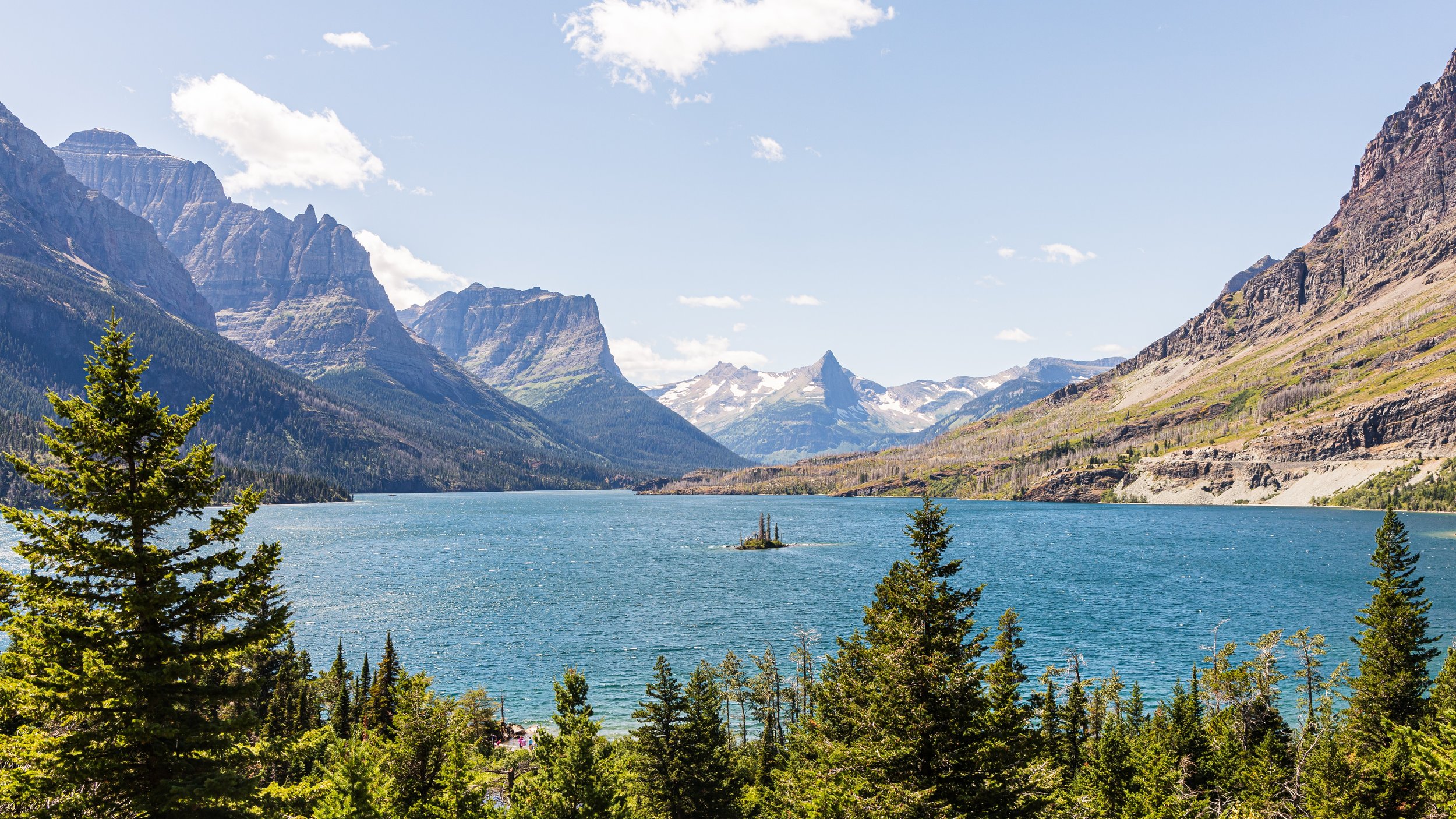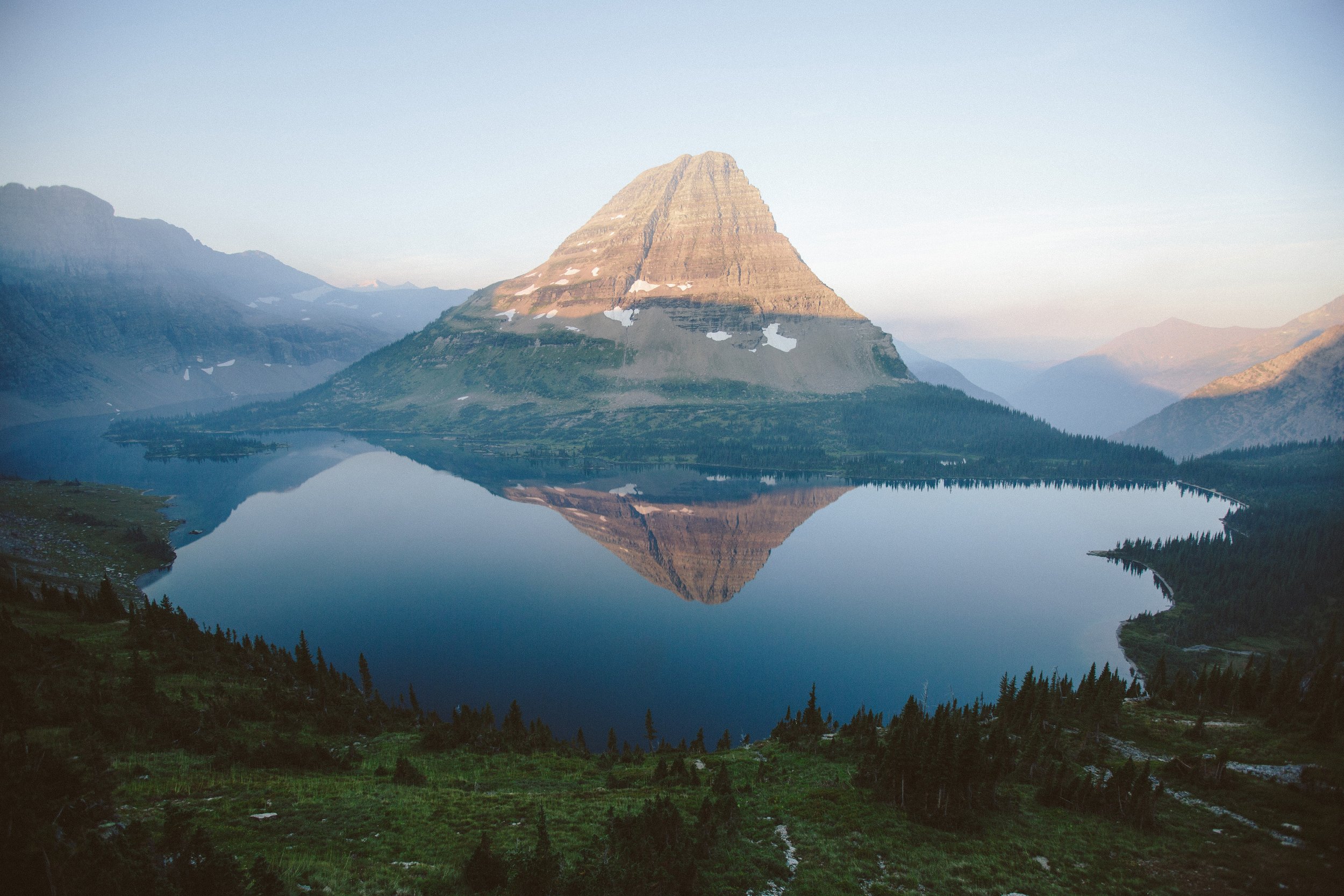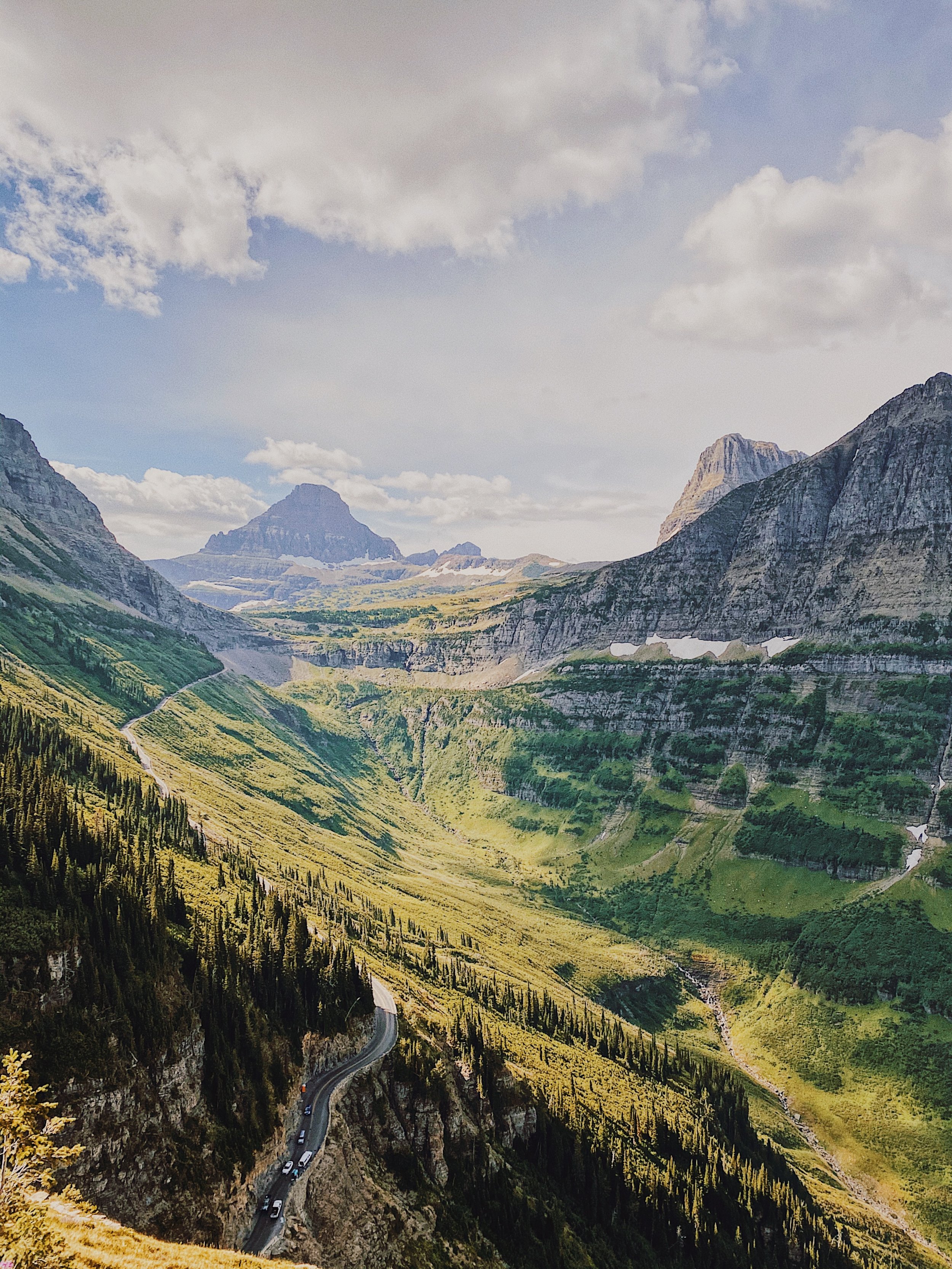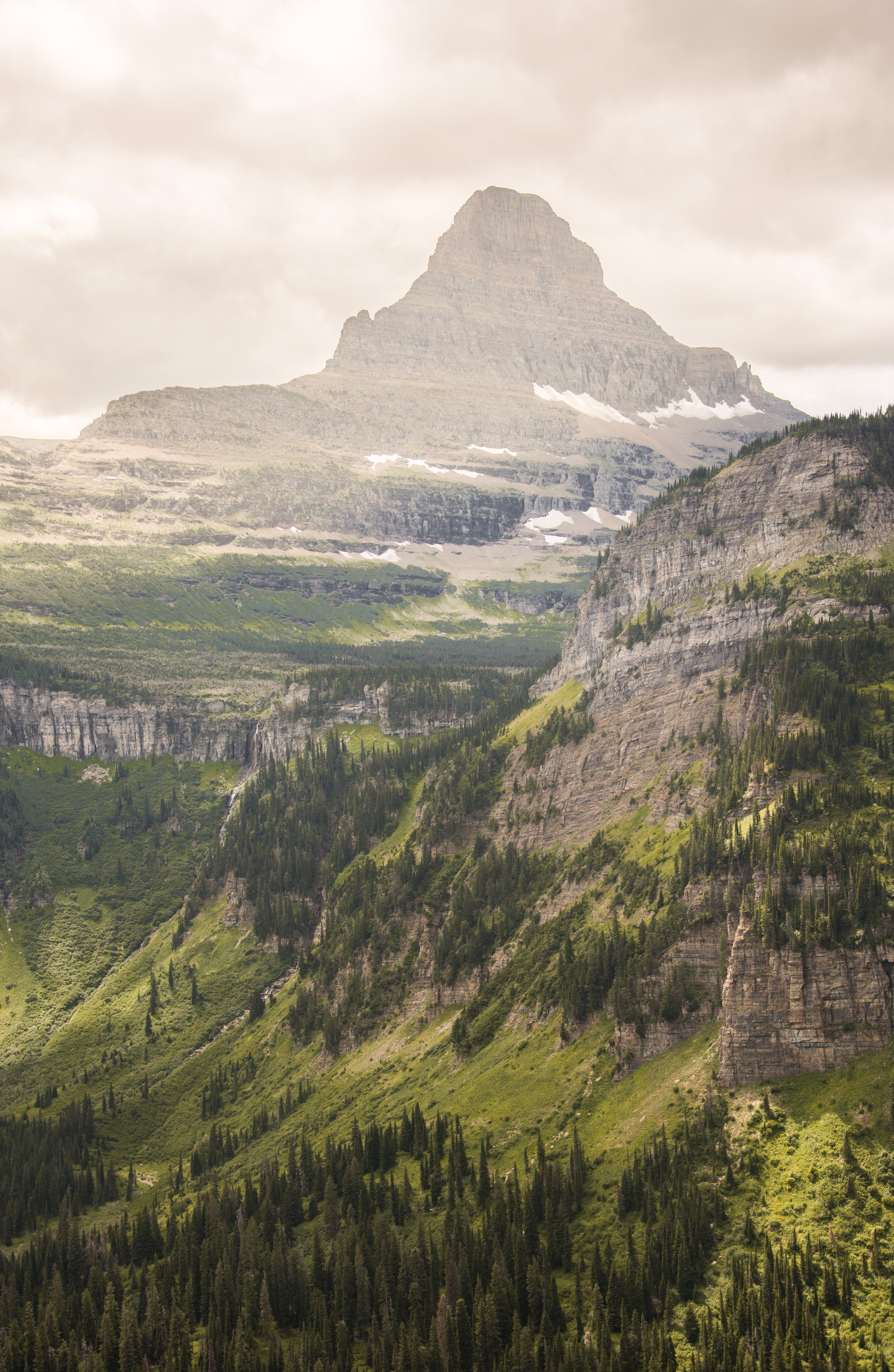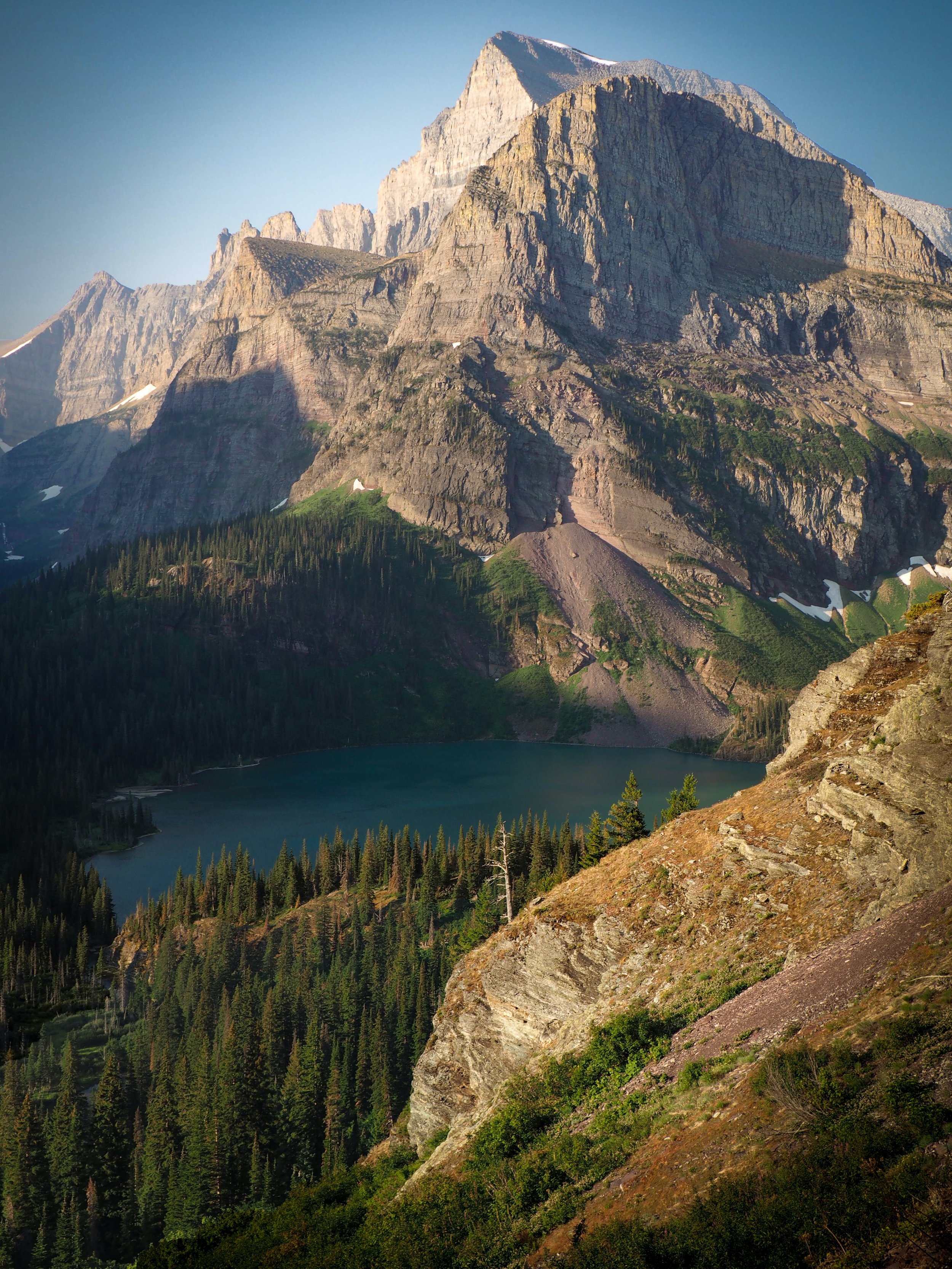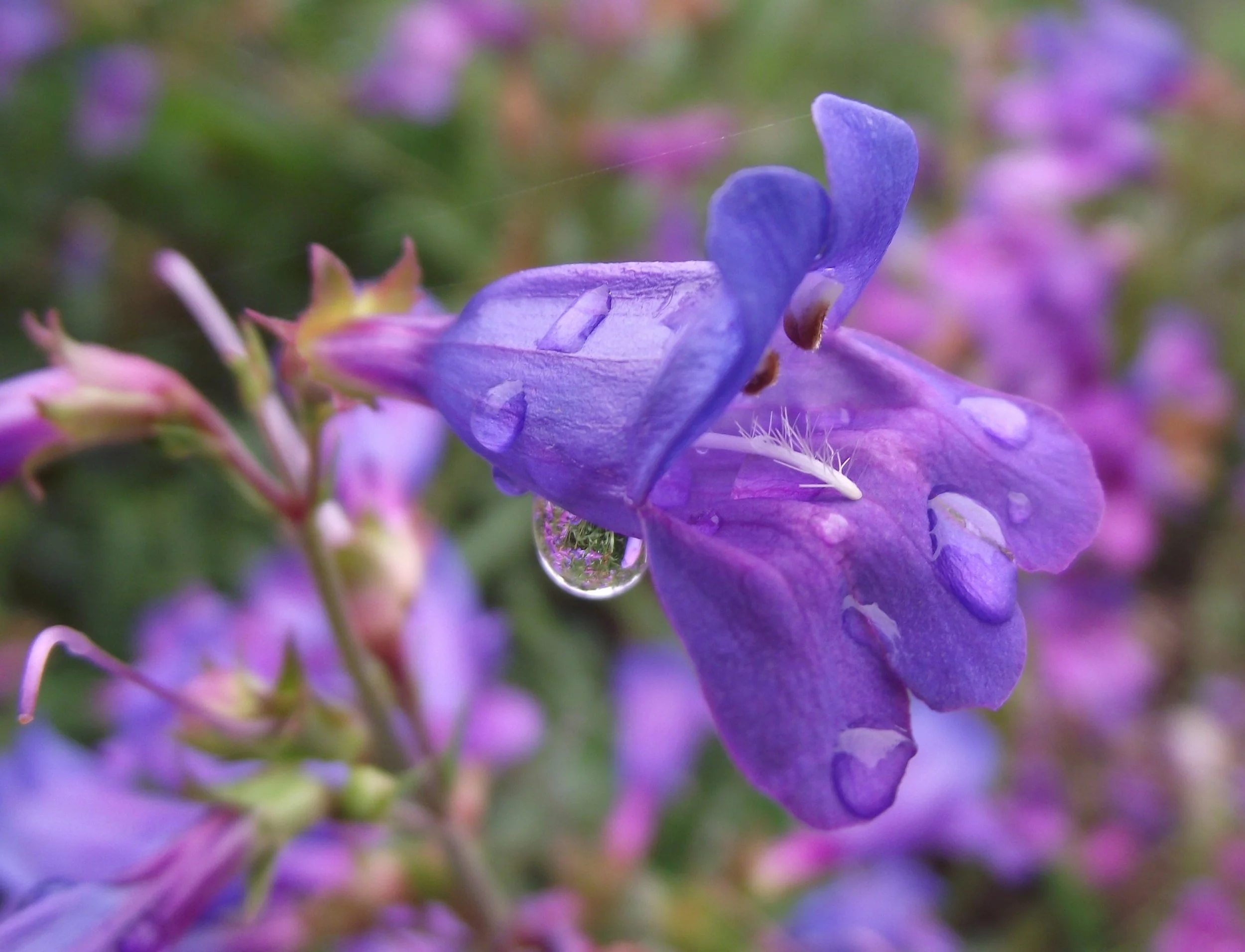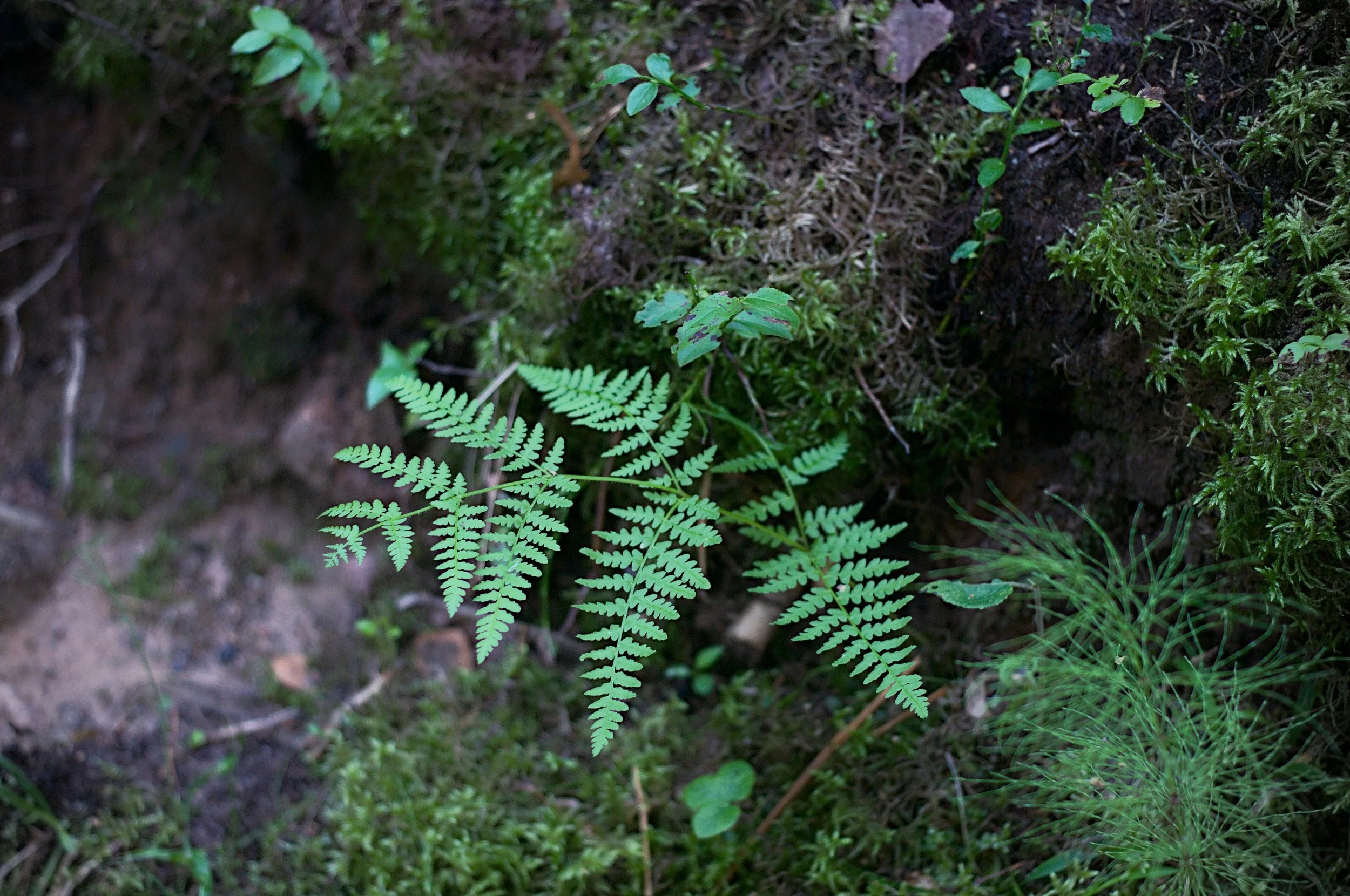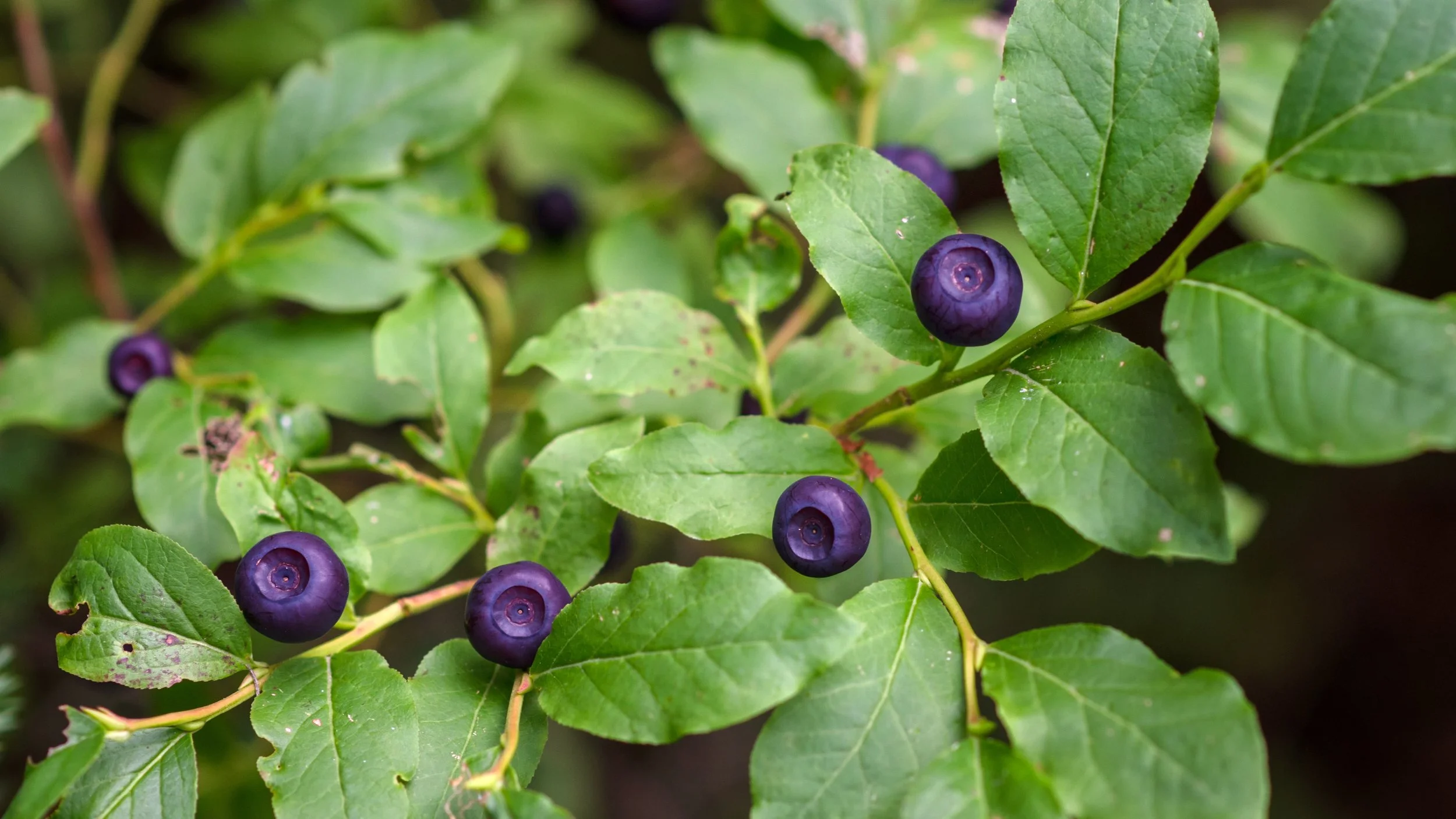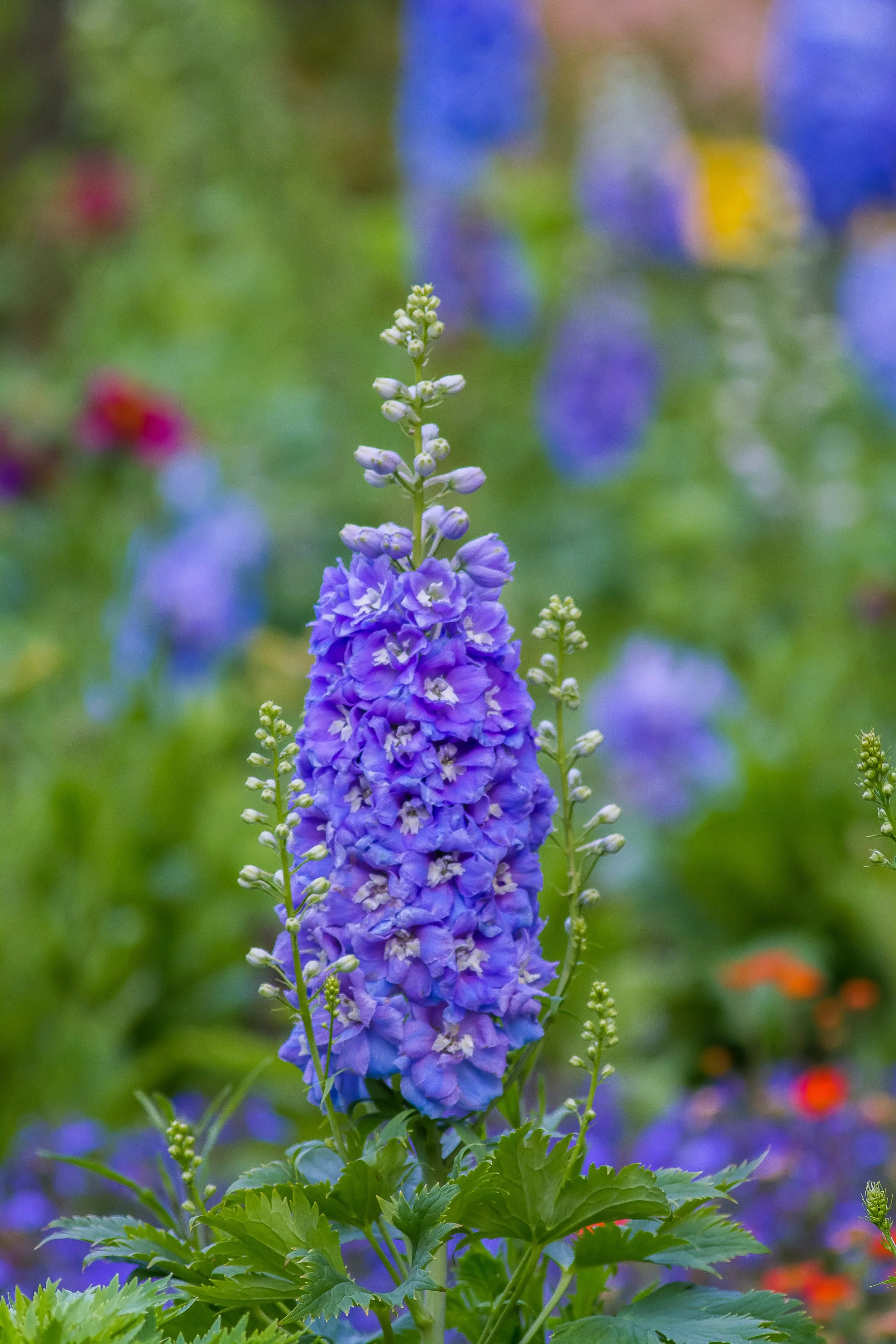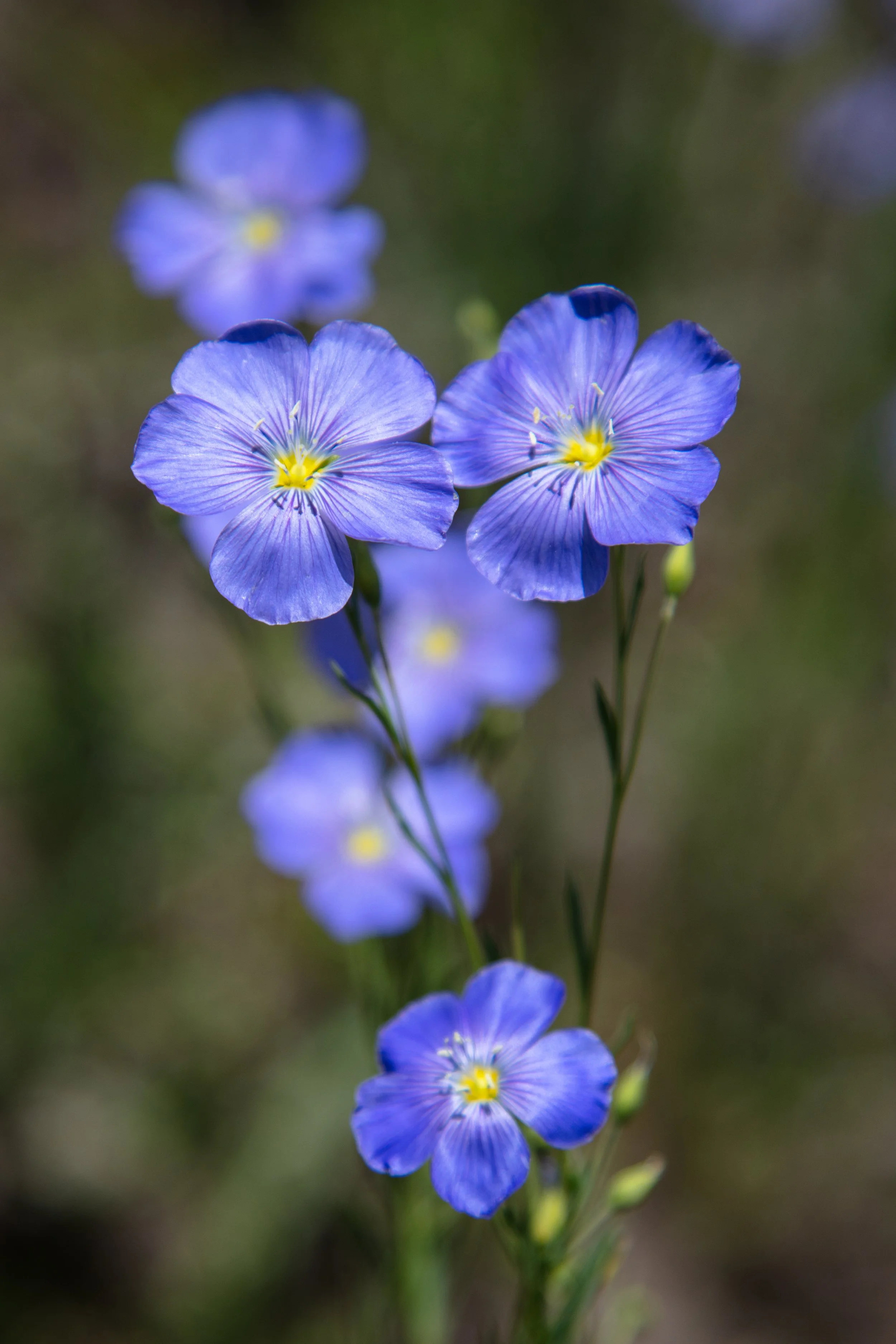Landmark Series—Behind the Bandana: Going to the Sun, Glacier National Park
Guest User
On your next visit to Glacier National Park, be sure to drive or bike the Going-to-the-Sun Road. Aptly known as the Highway to the Sun, this road is a breathtaking 51-mile scenic drive that gracefully winds through the heart of the park. Completed in 1932, this remarkable feat of transportation and engineering is a historic marvel. Embark on this exhilarating journey along the narrow, winding road, where you'll witness awe-inspiring sights of glaciers, valleys, waterfalls, mountains, and vibrant wildflowers. Keep your eyes peeled for enchanting wildlife encounters as you cross the Continental Divide at Logan Pass. Be sure to stop at Heaven's Peak, The Loop, Bird Woman Falls, Weeping Wall, Jackson Glacier, and Wild Goose Island for a truly unforgettable experience.
Let’s take a closer look at the featured species on our Going to the Sun Road Landmark Bandana:
Blue Copper Butterfly
Blue Penstemon
Brittle Bladderfern
Forget Me Not
Huckleberry
Larkspur
Lewis Flax
Mountain Bluebird
Mountain Goat
Paddle-Tailed Darner Dragonfly
Self Heal
FIELD GUIDE:
Land Acknowledgement:
Glacier National Park is located in the ancestral homelands of the Amskapi Piikani (the Blackfeet Nation of Montana), the Niitsítapi (the Blackfoot Confederacy), the Séliš (Salish), Ql̓ispé (Pend d’Oreille or Kalispel), and Ktunaxa (Kootenai). The state of Montana recognizes the First Nations peoples, these tribes are the original and longest-serving stewards of the lands.
#1. Blue Copper Butterfly (Lycaena heteronea)
Adult male Blue Copper Butterflies display wings adorned with stunning hues of blue and copper, complemented by black margins and delicate white fringes. Females boast a dull gray-brown or light blue coloring with a scattering of black spots and white fringe. As essential pollinators, their wingspan spans an impressive 1 to 1.5 inches. These remarkable butterflies can be found gracing open meadows, grasslands, and alpine regions, where the male individuals proudly exhibit their territorial nature, perching on plants and zealously guarding their realm against fellow males.
#2. BLUE PENSTEMON (Penstemon heterophyllus)
(Source: Wikimedia Commons, Stickpen)
Blue Penstemon is a plant known for its striking blue or violet-blue tubular flowers that attract hummingbirds, bees, and other pollinators. Note its lance-shaped, toothed leaves, often green in color. This plant is often found in hillsides, grasslands, and open forests.
#3. Brittle Bladderfern (Cystopteris fragilis)
(Source: Wikimedia Commons: A potato hater)
The Brittle Bladderfern, with its delicate lacy fronds, is easily distinguishable with its light green and airy appearance. It is commonly found in moist, shaded woodlands, streams, and rock crevices, despite its fragile nature, it is a hardy plant that can adapt to various environmental conditions.
#4. Forget Me Not (myosotis)
With its delicate blue petals and dainty appearance, the forget-me-not undeniably captivates the hearts of many, earning a special place in the world of flora. Its scientific name, Myosotis, originates from the Greek words meaning "mouse's ear," reflecting the small size and shape of its petals. While commonly blue, these enchanting flowers can also be found in shades of pink and white, and have a rich history of being used for respiratory ailments, memory improvement, and diuretic purposes. Notably, forget-me-nots hold the esteemed title of being Alaska's official state flower.
#5. Huckleberry (Vaccinium)
(Source: Wikimedia Commons, Bruno.karklis)
Huckleberries, small and dark purple or blue in color, are delightful berries that grow on shrubs. Similar in appearance to blueberries, they offer a unique and intense flavor, described as a delightful blend of sweet and tart, with a rich, wine-like taste. Not only are huckleberries delicious, but they are also a nutritional powerhouse, being low in calories and high in fiber, antioxidants, and essential vitamins such as vitamin C and vitamin K.
#6. Larkspur (Delphinium)
Larkspur, also known as Delphinium, is truly captivating and holds a special place in the world of gardening and horticulture. Its tall, spiky blooms and vibrant colors have mesmerized flower enthusiasts worldwide, while its diverse array of deep blues, purples, pinks, whites, and yellows caters to every aesthetic preference. However, it's important to note that larkspur plants can be toxic if ingested by humans or animals.
#7. Lewis Flax (Linum lewisii)
(Source: Wikimedia Commons, Ser Amantio di Nicolao)
Lewis' Flax is a beautiful plant that flourishes in open meadows, forests, and mountainous regions with well-drained soils. It produces striking blue to violet flowers with five delicate petals measuring about 2.5 centimeters in diameter, and its seeds are known for their pleasant nutty taste and high nutritional value. The plant holds cultural significance and historical uses in traditional herbal medicine.
#8. Mountain Bluebird (Sialia currucoides)
The Mountain Bluebird, a small thrush with striking sky-blue plumage, proudly holds the title of state bird in Idaho and Nevada. They are secondary cavity nesters, creating homes in various hollows, and feed on ground-level insects and fruits. Mountain Bluebirds have the bluest plumage among all North American bluebirds, with males sporting vibrant blue feathers and females displaying a bluish tint. Listen to their birdcall here.
(Source: Wikimedia Commons: 623setagc)
#9. Mountain Goat (Oreamnos americanus)
Mountain goats, both males and females, possess remarkable features including beards, short tails, and long black horns adorned with yearly growth rings. Their resilient double coats, consisting of a dense undercoat and longer, hollow outer hairs, safeguard them from the harsh elements. Although often mistaken as goats, they are not of the same genus; rather, mountain goats are associated with antelopes, gazelles, and cattle within the bovidae family. In alpine and subalpine environments, these magnificent creatures thrive. By counting the rings on their horns, one can determine the age of a mountain goat just before their two-year milestone, akin to the growth rings in trees. Beware on the trail, females, or nannies, exhibit protective behavior towards their territory and food, sometimes engaging in disputes with other nannies. During mating season, males engage in battles to secure a mate. While they may display hostility towards humans.
#10. Paddle-Tailed Darner Dragonfly (Aeshna palmata)
(Source: Wikimedia Commons, Wilfredor)
Paddle-tailed Darners, magnificent dragonflies named for their unique paddle-shaped appendage, are among the largest and swiftest-flying in North America. With clear wings, a slender body adorned with blue and white spots, and distinct markings on their abdomen, they measure between 2 1/4-4 ¾ inches in length. From mountains to prairies, these remarkable creatures can be found throughout the state, thriving in a diverse range of habitats including lakes, ponds, marshes, fens, saline ponds, and gentle streams, where dense shoreline vegetation provides a nurturing environment.
#11. Self Heal (Prunella Vulgaris)
Selfheal is a resilient plant that thrives in grasslands, woodlands, and even untreated lawns, providing nectar for bees and wasps with its lovely violet clusters. Not only does Selfheal boast a vibrant appearance, but it also has a long history of medicinal use for its anti-inflammatory, antioxidant, and antimicrobial properties. Its leaves and flowers are also edible and can be added to salads or cooked dishes, adding a unique, slightly bitter flavor.
Ready to geek out on more nature facts? Head over to our Landmark Series page for more.

